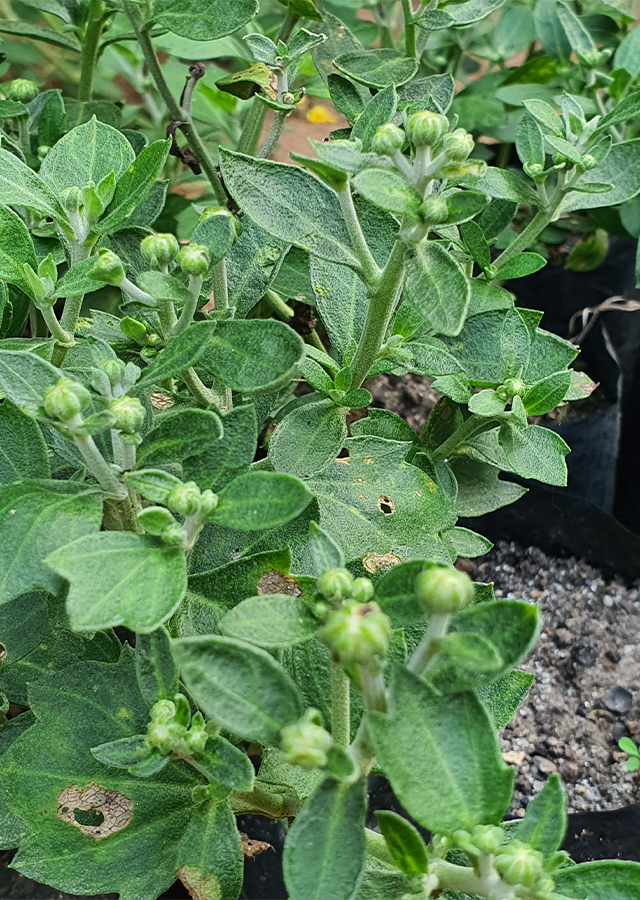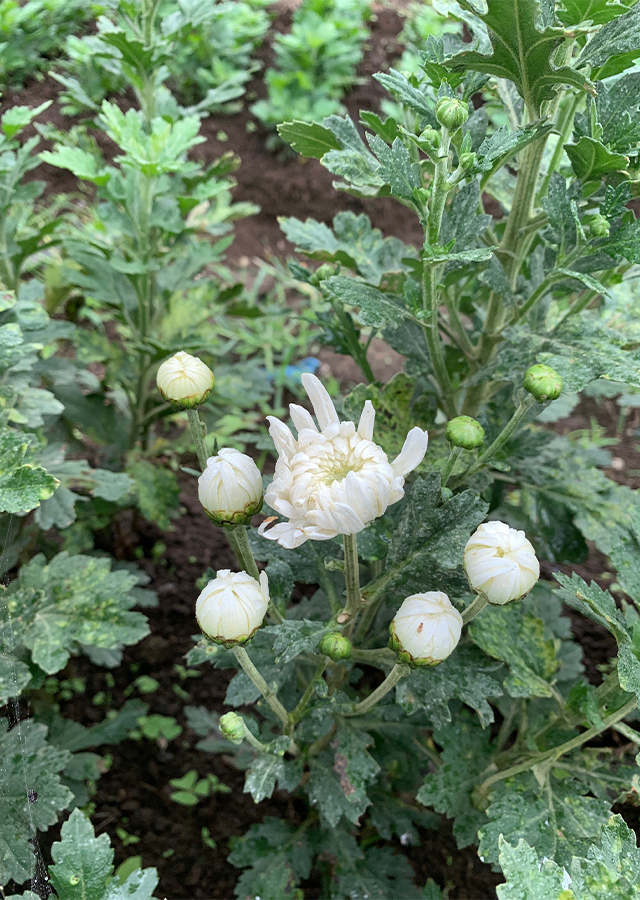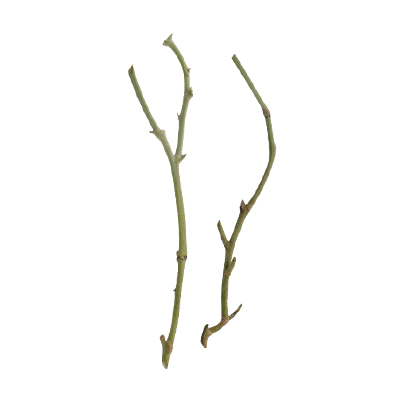Chrysanthemum
Chrysanthemum × morifolium (Ramat.) Hemsl.
Asteraceae
Location in our garden
Principal



Synonym
Anthemis × artemisifolia Willd.
Anthemis × grandiflora Ramat.
Anthemis × stipulacea Moench
Habitus
Herbaceous. An aromatic, perennial plant produces a clump of stems 25-100 cm tall from procumbent rhizomes.
Part Used
Leaves
Flowers
Stem
Growing Requirements
Full Sunshine
Habitat
Riverbanks
Mountains
Grassland
Overview
Chrysanthemum is native to East Asia and northeastern Europe, now cultivated in most warm countries. It is cultivated for ornamental and sometimes for medicinal uses. In addition, the plant is harvested from the wild for local use as food and medicine. Yellow flowered chrysanthemum is very popular in tea making. The tea brewed from the dried flowers has a golden hue and a mild, flowery flavor similar to chamomile.
Vernacular Names
Chua hua (Chinese), Rosas de Japon (Spanish), Rosas de Japon (Tagalog - Philippines).
Agroecology
Chrysanthemum morifolium is a plant of the temperate zone. Found in grasslands on mountain slopes, thickets, wet places by rivers, fields, roadsides, saline places by seashores. It can be grown successfully in tropical areas and is often cultivated in South-East Asia. Succeeds in most well-drained fertile soils in a sunny position. Plants can tolerate temperatures down to about -10 °C.
Morphology
- Stems - erect or ascending, hairy and aromatic.
- Leaves - thin, pinnately lobed, ovate to oblong-ovate, and 4 to 6 cm long. Lobes 2 to 3 on each side, ovate or oblong-ovate, and sharply toothed. Upper surface of the leaves is deep green while the under surface is gray-green.
- Flowers - peduncled, corymbosely panicled, and 1.5 to 2.5 cm in diameter, various in colour. Involucre bracts are oblong or elliptic, a receptacle is smooth or pitted.
- Fruits - achenes, very small, cuneate-oblong, somewhat compressed and grooved.
Cultivation
- By seeds - sow in a container and only cover the seed. It usually germinates in 10-18 days at 15 °C. When they are large enough to handle, prick the seedlings out into individual pots and plant them out when large enough.
- By division - larger clumps can be replanted direct into their permanent positions.
Chemical Constituents
- Saponins, tannins, cardiac glycosides, alkaloids, flavonoids, steroids, and terpenoids.
- Camphene, borneol, bornyl aceate, (1R)-camphor, (-)-4-terpineol, alpha-terpineol, eucalyptol, cis-caryophyllene, caryophyllene oxide, juniper camphor, β-sesquiphellandrene, 1,8-cineole. α-curcumene and beta-farnesene
Traditional Medicinal Uses
- Studies have shown antioxidant, antimicrobial, anti-inflammatory, anti-melanogenic, antitumor, cardioprotective, vasorelaxant, neuroprotective, and xanthine oxidase inhibitory properties.
- The flower can reduce inflammation and calm the nerves. It is also recommended for reducing fever and cold symptoms in the early stages.
- Emulsion of flowers used for infections of the cervix.
- Flower tea is used to wash sore eyes, open sores, and wounds.
- In China, flowers are used for migraines, hypertension, inflammation, respiratory problems. Also, flowering heads are made into tonic and sedative preparations. In addition, infusions are used as a collyrium in eye affections.
- In Deccan, the plant is used in conjunction with black pepper to treat gonorrhea and bittersweet as an ointment, used for bruises, sprains, calluses.
- In Guam, infusion of flowers is used as a remedy for intermittent fevers; also used by women as a remedy for hysteria and monthly irregularities.
Part Used
Reference Sources
Toppo, K.I., Shubha, G., Deepak, K., and Anil, K. 2015. Study of Antimicrobial Effect of Chrysanthemum morifolium Ramat. (Asteraceae) Against some Human Pathogens. International Journal of Pharmacology & Biological Sciences, 9(2): 179-188.
Tropical Plants Database, Ken Fern. tropical.theferns.info/viewtropical.php?id=Chrysanthemum+morifolium. Accessed on 17-12-2021.
Wang YJ, Guo QS, Yang XW, Xu WB, Tao HY. 2008. Characterization of chemical components of essential oil from flowers of Chrysanthemum morifolium produced in Anhui province. Chinese. PMID: 19166008, 33(19): 07-11.
Xue H, Jiang Y, Zhao H, Köllner TG, Chen S, Chen F, Chen F. 2019. Characterization of Composition and Antifungal Properties of Leaf Secondary Metabolites from Thirteen Cultivars of Chrysanthemum morifolium Ramat. Molecules, 24(23):4202.


